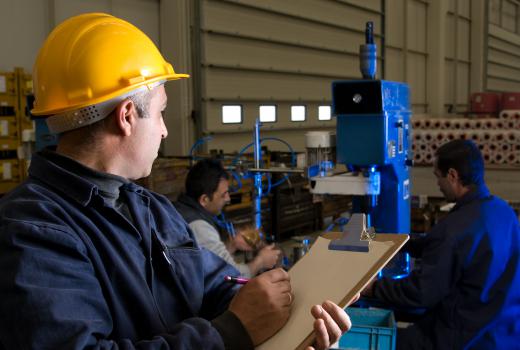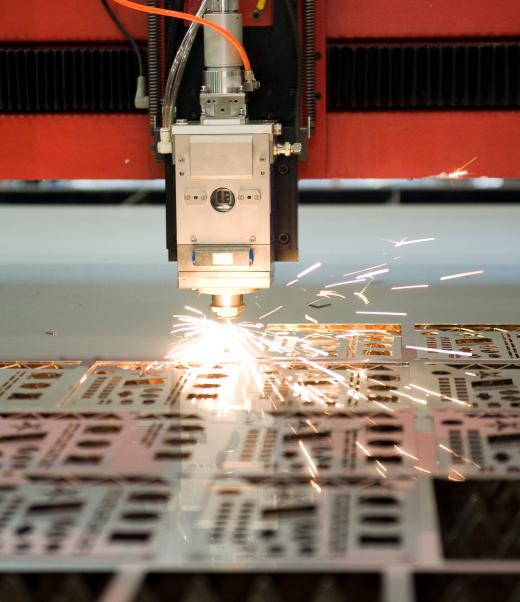Since the Industrial Revolution in the late 18th and early 19th centuries, the manufacturing process has undergone many dramatic changes. One of the most dramatic was the introduction of computer aided manufacturing (CAM), a system of using computer technology to assist in the manufacturing process. This technology began to be developed in the 1950s, and by the 1970s, it was being used by some large manufacturers. By the early 21st century, computer aided manufacturing had become an integral part of the manufacturing process in many industries.
Automation and Use of Robotics

Through the use of CAM, a factory can become highly automated, using systems such as real-time control and robotics. A CAM system usually seeks to control the production process through varying degrees of automation. These processes are carried out by various robotic tools, such as lathes, milling machines and welding machines. Each of the many manufacturing processes in a CAM system is controlled by computers, so a high degree of precision and consistency can be achieved that is not possible with machinery that must be controlled by people.
Greater Precision

In computer aided manufacturing, computer software is used to create detailed, precise instructions for the machinery the manufactures parts. The software and machinery use numerical control (NC) applications that include precise measurements. As a result, the manufacturing process can be repeated over and over to the exact same specifications. Such precision is impossible with handheld or hand-controlled tools. This precision results in a higher quality and uniformity of parts and goods.
Resource Management

Some CAM systems provide additional automation by also keeping track of materials used and automating the ordering process from suppliers or the delivery process from the manufacturer's inventory. This helps ensure that enough materials are always available to keep the manufacturing process on schedule. CAM systems also can automate the process for requesting tool maintenance, repair or replacement.
Computer Aided Design
Computer aided manufacturing is commonly linked to computer aided design (CAD) systems. The resulting integrated CAD/CAM system then takes the computer-generated design and feeds it directly into the manufacturing system. The design is then converted into multiple computer-controlled processes, such as drilling or turning.
Ease of Customization
One advantage of computer aided manufacturing is that it can be used to facilitate customization — the process of creating small batches of products that are custom-designed to suit particular customers or clients. Without CAM and the CAD process that precedes it, customization would be a time-consuming, labor-intensive and costly process. Computer software, however, allows for easy customization and rapid design changes. The automatic controls of the CAM system make it possible to adjust the machinery automatically for each order.
People Still Needed
Many workers have feared that the increased use of robotic tools would eliminate jobs in the manufacturing industry. Although this might be true to some degree, the robotic machines that are commonly used in factories still require human workers. The nature of those workers' jobs often change, however. Repetitive tasks are delegated to machines, and human workers' job descriptions move more toward things such as set-up, quality control, creating the initial designs and machine maintenance.
